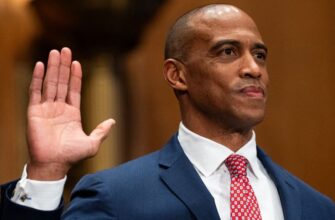Despite widespread current adherence across all 50 U.S. states, the District of Columbia, and territories—meeting a May 7th federal deadline—the rollout of REAL ID faced considerable initial resistance from numerous state governments.
Just two years after President George W. Bush signed the law into effect in 2005, several governors voiced significant concerns regarding compliance with the nationwide security standard.
“We are putting up with the federal government on so many fronts, and nearly every month they come out with another… unfunded mandate to tell us that our life is going to be better if we’ll just buckle under on some other kind of rule or regulation,” said then-Montana Gov. Brian Schweitzer during a 2008 NPR interview. “And we usually just play along for a while, we ignore them for as long as we can, and we try not to bring it to a head. But if it comes to a head, we found that it’s best to just tell them to go to hell and run the state the way you want to run your state.”
Schweitzer even signed legislation in 2007 prohibiting Montana’s Department of Motor Vehicles (DMV) from enforcing REAL ID stipulations, citing concerns about privacy. In a letter to then-Colorado Gov. Bill Ritter, he described the program as “a threat to privacy.”
Similarly, Washington state’s Democratic Gov. Christine Gregoire enacted legislation demanding that the federal government allocate $250 million to cover what she considered an unfunded mandate.
“Even worse, it doesn’t protect the privacy of the citizens of Washington,” Gregoire stated upon signing the bill.
On the Republican side, Pennsylvania Gov. Tom Corbett signed Act 38 in 2008, effectively halting the implementation of REAL ID by PennDOT. The act explicitly stated that “neither the governor nor the Department of Transportation or any other Commonwealth agency shall participate in the REAL ID Act of 2005 or regulations promulgated thereunder.” This policy was later reversed with the passage of Act 3 in 2017, signed by Democratic Gov. Tom Wolf.
New Jersey currently reports the lowest rate of REAL ID adoption among states, with only 17% of residents possessing one. Many New Jerseyans have expressed frustration regarding the state’s capacity to process applications effectively.
Recently, Kentucky Republican state Sen. Jimmy Higdon formally requested a deadline extension from the Department of Homeland Security (DHS), as reported by the Lexington Herald-Leader.
State compliance with REAL ID signifies that a state has fulfilled the federal security benchmarks established by DHS for driver’s license issuance. The current universal compliance across states ensures their designation as compliant.
- The program remains optional for individuals, thanks to alternative identification options like passports.
- Therefore, a low proportion of residents holding REAL ID doesn’t impact overall state compliance statistics.
REAL ID requirements stemmed from a post-9/11 national security initiative spearheaded by then-Representative James Sensenbrenner (R-Wis.). The Transportation Security Administration (TSA) will no longer accept photo identification lacking a star symbol – signifying verification—unless the identification is a passport.
Verification necessitates providing Social Security information or other personal identifiers.
The law’s implementation date has been repeatedly postponed due to factors including the COVID-19 pandemic and ongoing concerns about varying state readiness and the ability of states to allocate the resources needed to meet federal guidelines.
Fox News Digital sought comment from current governors Bob Ferguson (Washington), Greg Gianforte (Montana), and Josh Shapiro (Pennsylvania).









